Acetylcytidine modification of Amotl1 by N-acetyltransferase 10 contributes to cardiac fibrotic expansion in mice after myocardial infarction
- PMID: 38839936
- PMCID: PMC11192918
- DOI: 10.1038/s41401-024-01306-8
Acetylcytidine modification of Amotl1 by N-acetyltransferase 10 contributes to cardiac fibrotic expansion in mice after myocardial infarction
Abstract
Cardiac fibrosis is a pathological scarring process that impairs cardiac function. N-acetyltransferase 10 (Nat10) is recently identified as the key enzyme for the N4-acetylcytidine (ac4C) modification of mRNAs. In this study, we investigated the role of Nat10 in cardiac fibrosis following myocardial infarction (MI) and the related mechanisms. MI was induced in mice by ligation of the left anterior descending coronary artery; cardiac function was assessed with echocardiography. We showed that both the mRNA and protein expression levels of Nat10 were significantly increased in the infarct zone and border zone 4 weeks post-MI, and the expression of Nat10 in cardiac fibroblasts was significantly higher compared with that in cardiomyocytes after MI. Fibroblast-specific overexpression of Nat10 promoted collagen deposition and induced cardiac systolic dysfunction post-MI in mice. Conversely, fibroblast-specific knockout of Nat10 markedly relieved cardiac function impairment and extracellular matrix remodeling following MI. We then conducted ac4C-RNA binding protein immunoprecipitation-sequencing (RIP-seq) in cardiac fibroblasts transfected with Nat10 siRNA, and revealed that angiomotin-like 1 (Amotl1), an upstream regulator of the Hippo signaling pathway, was the target gene of Nat10. We demonstrated that Nat10-mediated ac4C modification of Amotl1 increased its mRNA stability and translation in neonatal cardiac fibroblasts, thereby increasing the interaction of Amotl1 with yes-associated protein 1 (Yap) and facilitating Yap translocation into the nucleus. Intriguingly, silencing of Amotl1 or Yap, as well as treatment with verteporfin, a selective and potent Yap inhibitor, attenuated the Nat10 overexpression-induced proliferation of cardiac fibroblasts and prevented their differentiation into myofibroblasts in vitro. In conclusion, this study highlights Nat10 as a crucial regulator of myocardial fibrosis following MI injury through ac4C modification of upstream activators within the Hippo/Yap signaling pathway.
Keywords: Hippo signaling pathway; N-acetyltransferase 10; ac4C-RIP-sequencing; angiomotin-like 1; cardiac fibrosis.
© 2024. The Author(s), under exclusive licence to Shanghai Institute of Materia Medica, Chinese Academy of Sciences and Chinese Pharmacological Society.
Conflict of interest statement
The authors declare no competing interests.
Figures

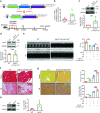
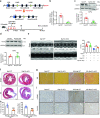
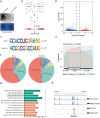
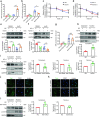
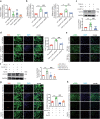
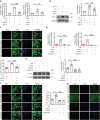

References
MeSH terms
Substances
LinkOut - more resources
Full Text Sources
Medical
Research Materials
Miscellaneous

